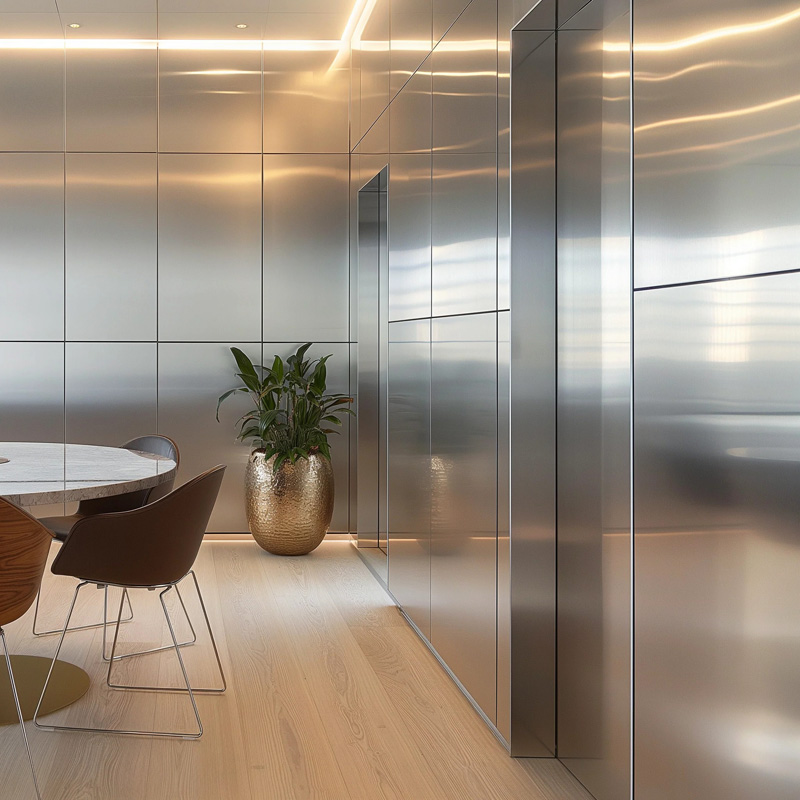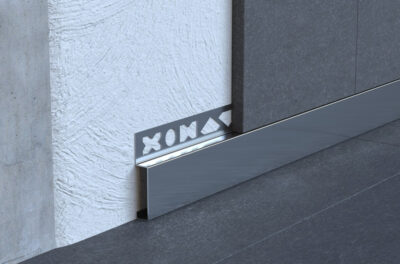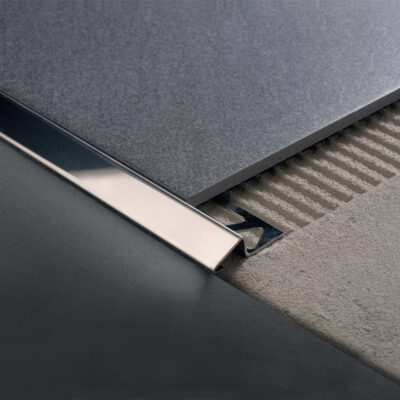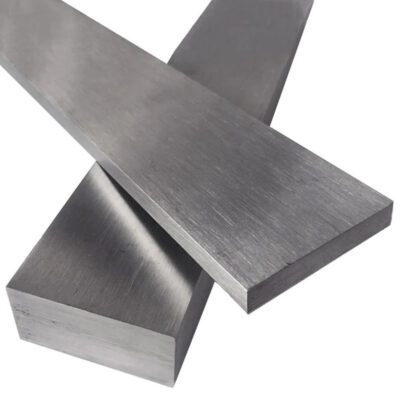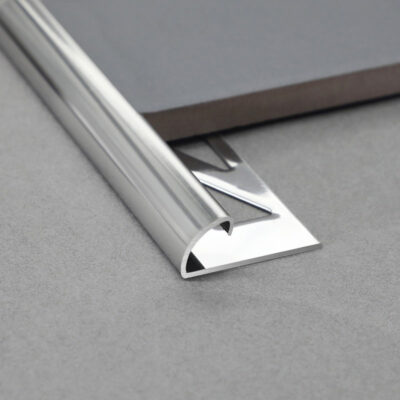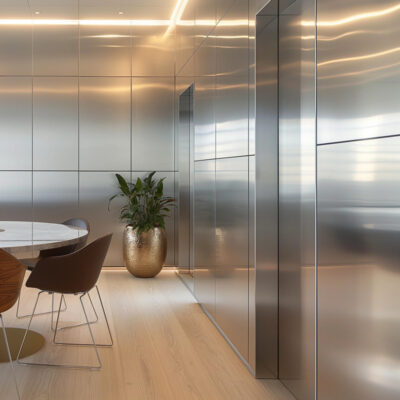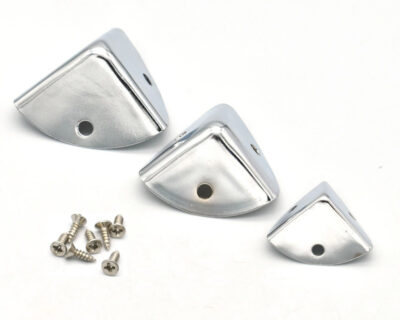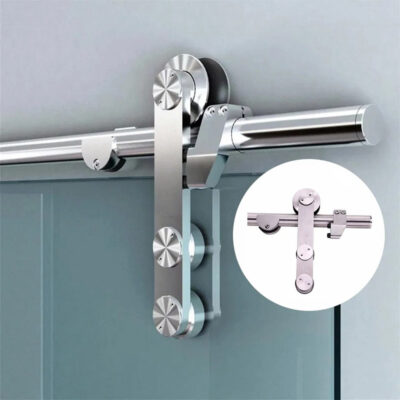The Evolution of Commercial Wall Solutions: Where Functionality Meets Aesthetics
The walls that surround us in commercial spaces have undergone a remarkable transformation over the decades. What began as simple painted drywall or tiled surfaces has evolved into sophisticated systems that serve multiple functions beyond mere space division. This evolution reflects our changing understanding of what walls can do for us – from protecting surfaces to contributing to hygiene, durability, and aesthetic appeal.
Back in the mid-20th century, commercial interiors typically featured painted concrete blocks in industrial settings or wood paneling and wallpaper in more upscale environments. These solutions, while serviceable, had significant limitations. Paint would chip and require frequent touch-ups. Wallpaper would peel in humid conditions. Tile grout would stain and harbor bacteria. The maintenance demands were substantial, and the lifespan relatively short.
The shift toward metal wall systems began gradually in specialized environments like commercial kitchens and laboratories, where durability and cleanability were paramount concerns. Early metal panels were primarily functional, with little consideration for aesthetics. They served their purpose in these utilitarian spaces but weren’t considered suitable for front-of-house areas or environments where appearance mattered.
This changed dramatically in the late 1980s and early 1990s with advancements in metal fabrication technology. Suddenly, manufacturers could produce metal panels with various finishes, textures, and even patterns. Stainless steel emerged as the preferred material due to its exceptional combination of corrosion resistance, durability, and increasingly sophisticated appearance options.
During a recent facility renovation project I consulted on, the property manager shared an interesting observation: “We’ve come full circle in some ways. In the 1960s, exposed metal was considered industrial and unsuitable for premium spaces. Now, the sleek look of stainless steel signals quality and sophistication.” This perspective highlights how perceptions have shifted alongside technological advancements.
Today’s market demands have elevated stainless steel wall panels from purely functional elements to design features that can enhance the overall aesthetic of a space while delivering superior performance. The balance between form and function has never been more achievable, particularly as manufacturers continue to innovate with new finishes and mounting systems.
Understanding Stainless Steel Wall Panel Systems: Materials, Types, and Applications
Stainless steel wall panels represent a diverse family of products rather than a single, uniform solution. At their core, these panels are manufactured from stainless steel alloys – typically grades 304 or 316. Grade 304 is the more commonly used option, offering excellent corrosion resistance and durability for most indoor applications. Grade 316 adds molybdenum to the alloy mix, enhancing resistance to chlorides and harsh chemicals, making it the preferred choice for environments with extreme exposure like swimming pools, coastal locations, or food processing facilities where aggressive cleaning agents are used regularly.
The composition difference might seem minor on paper, but it makes a significant practical difference. During a tour of a seafood processing plant last year, the maintenance director pointed out sections where they had initially installed 304-grade panels near brine tanks. “Within eighteen months, we noticed pitting beginning to form,” he explained. “We replaced those sections with 316 panels, and three years later, they still look brand new despite constant exposure to salt spray.”
Beyond the base alloy, stainless steel wall panels vary considerably in their finish options. These include:
- #4 Finish (Brushed): The most common commercial finish, featuring a unidirectional brushed appearance
- #8 Finish (Mirror): A highly reflective surface that maximizes light reflection
- Embossed/Textured: Patterns pressed into the steel that add visual interest and help hide minor scratches
- Custom Patterns: Proprietary designs created through specialized rolling processes
Thickness is another crucial variable, typically ranging from 0.7mm to 1.5mm (22 to 16 gauge) depending on the application. Thinner panels offer economic advantages and easier handling, while thicker options provide enhanced durability and dent resistance.
The applications for stainless steel wall panels span numerous industries and environments:
- Healthcare facilities value their antimicrobial properties and ease of sanitization
- Food processing operations rely on their non-porous surface that meets stringent hygiene regulations
- Commercial kitchens appreciate their resistance to heat, moisture, and cleaning chemicals
- Laboratories benefit from their chemical resistance and cleanability
- Public spaces like airports and transit stations utilize their durability and vandal-resistant qualities
- High-end retail and hospitality venues leverage their contemporary aesthetic appeal
An architectural specification writer I collaborated with recently noted, “What’s fascinating about stainless steel wall systems is how they’ve transcended their industrial origins. We’re now specifying them in luxury hotel lobbies and high-end retail environments not just for their performance but because clients specifically request that distinctive look.”
Wall panels can also be categorized by their installation method – direct-applied systems that mount directly to existing wall substrates or modular systems that incorporate furring strips or specialized mounting hardware. E-Sang offers several mounting options that address different structural and aesthetic requirements, from nearly invisible seams to more pronounced reveals between panels.
Technical Specifications and Performance Standards
The performance of stainless steel wall panels is governed by specific technical parameters that help architects, designers, and facility managers select the appropriate system for their needs. Understanding these specifications ensures that installations meet expectations and comply with relevant building codes and industry standards.
Panel thickness represents a fundamental specification that directly impacts performance. Commercial-grade panels typically range from 0.7mm to 1.5mm (22 to 16 gauge). This seemingly small variation makes a substantial difference in practical applications. Thinner panels (0.7-0.8mm) work well in environments with minimal physical impact risk, while thicker options (1.2-1.5mm) provide necessary resilience in high-traffic areas subject to potential impacts from carts, equipment, or other physical stresses.
Standard panel dimensions vary by manufacturer but typically range from 1200-1220mm (47-48 inches) in width and can extend from 2400mm to 3000mm (94-118 inches) in height. Custom dimensions are available from specialty manufacturers, though they generally come with premium pricing and longer lead times. These dimensional considerations become particularly important when planning installations to minimize seams and waste.
The physical properties of stainless steel panels provide significant advantages in demanding environments:
| Property | Typical Value | Significance |
|---|---|---|
| Tensile Strength | 515-1035 MPa (depending on grade) | Resistance to deformation under tension |
| Yield Strength | 205-515 MPa | Point at which permanent deformation occurs |
| Thermal Expansion | 17.3 × 10^-6/°C | Critical for installation planning across temperature variations |
| Fire Rating | Class A (ASTM E84) | Non-combustible material with excellent fire resistance |
| Impact Resistance | 2.0-3.5 joules (per EN 438) | Ability to withstand physical impacts without damage |
| Chemical Resistance | Excellent for most commercial cleaning agents | Critical for maintaining sanitary conditions |
Industry compliance represents another crucial dimension of specification. Depending on the application environment, stainless steel wall panels must meet various standards:
For healthcare applications, panels should comply with:
- ASTM G21 (fungal resistance)
- ASTM G22 (bacterial resistance)
- NFPA 286 (fire safety)
Food processing facilities typically require:
- FDA food contact compliance (21 CFR 174-178)
- USDA acceptance for food processing areas
- NSF certification for specific applications
While reviewing specifications for a recent hospital renovation project, a healthcare facility planner mentioned, “We initially considered FRP panels for our emergency department corridors until we calculated the lifecycle costs. The stainless option costs about 40% more upfront, but with a 30+ year lifespan versus 10-15 years for FRP, the economics became compelling – not to mention the improved aesthetics and impact resistance.”
A sometimes overlooked technical consideration involves substructure requirements. Stainless steel panels typically require secure mounting to solid backing or appropriately spaced furring strips. The mounting system must accommodate the significant weight of metal panels (approximately 8-10 kg/m²) while providing sufficient support to prevent oil-canning (a visible waviness in the panel surface). This requires careful evaluation of existing wall structures during the specification process.
Installation Methods and Best Practices
The successful deployment of stainless steel wall panels begins long before the first panel is mounted. Proper installation ensures not only aesthetic excellence but also the long-term performance and durability of the entire system. Having observed numerous installations across different facility types, I’ve noticed that the most successful projects share several common practices.
The foundation of any quality installation is thorough substrate preparation. Unlike some wall coverings that can mask minor imperfections, stainless steel tends to telegraph any substrate irregularities. This means walls must be remarkably flat and true. For new construction, specifying appropriate flatness tolerances for substrate walls is essential. For retrofits, existing walls may require significant remediation.
“We learned this lesson the hard way on our first major stainless panel project,” admitted a contractor I spoke with recently. “We assumed the existing concrete block wall was flat enough, but after installation, every small deviation showed up as a visible distortion in the panel surface. We ended up having to remove everything and install furring strips to create a truly flat mounting plane.”
The primary installation methods fall into several categories:
| Installation Method | Description | Best Applications | Considerations |
|---|---|---|---|
| Direct Adhesive | Panels bonded directly to substrate with high-strength construction adhesive | Simple installations with perfectly flat substrates | Limited ability to remove panels; requires perfect substrate; lowest cost approach |
| Z-clip/French Cleat | Interlocking mounting hardware on panels and walls | Areas where future access may be needed; uneven substrates | Creates small standoff from wall; allows for panel removal; moderate cost |
| Channel System | Panels slide into vertical or horizontal channels | Long corridor runs; areas requiring panel alignment | Creates visible reveals between panels; excellent for uneven substrates; higher cost |
| Mechanical Fastening | Direct screwing through panel face into substrate | Industrial applications where aesthetics are secondary | Creates visible fastener heads; fastest installation method; lowest material cost |
The spacing and layout planning represents another critical aspect of preparation. Most professional installers work from detailed shop drawings that account for:
- Panel sizes and orientations
- Joint locations
- Cutouts for switches, outlets, and fixtures
- Termination details at ceilings, floors, and adjacent materials
Temperature considerations also play an unexpectedly important role. Stainless steel expands and contracts with temperature changes, requiring accommodation in both the design and installation process. Panels should acclimate to the installation environment for at least 24 hours before mounting. Additionally, expansion gaps must be maintained at panel perimeters, particularly in environments with significant temperature fluctuations.
A hospital facilities director shared a cautionary tale during a recent renovation consultation: “In our first kitchen renovation, we installed panels during winter with the building’s heating system off. When we fired everything up and the space reached operating temperature, we got buckling at several panel joints because the installer hadn’t left adequate expansion room. We’ve been meticulous about temperature acclimation ever since.”
Specialized tools frequently make the difference between amateur and professional results. These include:
- Non-marring rubber mallets for panel alignment
- Specialized cutting tools (plasma cutters or fine-toothed circular saws with metal-cutting blades)
- Protective films and handling equipment to prevent fingerprints and scratches
- Proper masking and drilling templates for cutouts
The most challenging aspect of many installations involves complex cuts and penetrations. Outlets, switches, pipes, and fixtures often require precise openings in the panels. Pre-planning these cutouts and using proper templates significantly improves outcomes and reduces waste from errors.
Maintenance, Cleaning, and Longevity
One of stainless steel wall panels’ most compelling advantages lies in their extraordinary longevity and straightforward maintenance requirements. When properly installed and maintained, these systems can remain functional and aesthetically pleasing for decades – far outlasting most alternative wall materials.
The maintenance regime begins with understanding the specific finish of your panels. Different stainless steel finishes respond best to particular cleaning approaches:
- Brushed finishes (like the common #4 finish) should be cleaned in the direction of the grain
- Mirror finishes require non-abrasive cleaners and soft microfiber cloths to avoid scratching
- Textured finishes can withstand slightly more aggressive cleaning but benefit from soft-bristled brushes
For routine cleaning, simplicity prevails. Most installations require nothing more than warm water with mild detergent and a soft cloth. In environments with heavier soil loads, like commercial kitchens, specialized stainless steel cleaners can be used, though care should be taken to fully rinse any chemical residues. For healthcare settings, panels can generally withstand hospital-grade disinfectants without degradation – a significant advantage during the recent pandemic when cleaning protocols intensified dramatically.
“What continues to impress me is how well these panels hold up in our emergency department,” noted a hospital environmental services director I interviewed. “We’ve had these panels for over twelve years with constant, aggressive cleaning using quaternary disinfectants. Other than a few minor scratches near gurney paths, they look remarkably similar to when they were installed.”
Addressing damage when it does occur requires understanding the nature of the specific issue:
| Type of Damage | Repair Approach | Prevention |
|---|---|---|
| Light Scratches | Fine-grit polishing pad in direction of grain* | Use protective corner guards in vulnerable areas |
| Deeper Scratches | Professional refinishing may be required | Install thicker gauge panels in high-traffic zones |
| Dents | Panel replacement typically necessary | Consider reinforced backing in impact-prone areas |
| Chemical Etching | Typically permanent; panel replacement | Train staff on appropriate cleaning chemicals |
| Water Spots | Cleaning with vinegar solution | Fully dry panels after wet cleaning |
*Only for non-specialized finishes. Some textured or proprietary finishes cannot be field-refinished.
The expected lifespan of stainless steel wall panels varies based on environment and usage patterns, but conservative estimates start at 20-30 years for most commercial applications. This compares favorably to:
- Painted drywall: 3-5 years between repainting
- FRP panels: 10-15 years before replacement
- Ceramic tile: 15-20 years before grout/maintenance issues
- Vinyl wall coverings: 7-10 years before replacement
This extended lifespan translates directly into reduced lifecycle costs despite higher initial investment. A facility manager for a national restaurant chain shared, “We’ve shifted all our kitchen renovations to stainless steel panels after calculating the true costs. The annual maintenance costs dropped by about 70% compared to our old FRP panels, and we’re not facing replacement every decade.”
Factors that can reduce longevity include exposure to inappropriate chemicals (particularly chlorides and acids), inadequate cleaning allowing buildup of contaminants, and mechanical damage from impacts. Conversely, following manufacturer maintenance guidelines and promptly addressing minor issues extends service life considerably.
Design Versatility and Aesthetic Considerations
When stainless steel wall panels first entered the market, they were primarily valued for functional attributes rather than aesthetic appeal. Today, these systems have evolved into design elements that architects and interior designers actively incorporate for their visual characteristics as well as performance benefits. The design versatility of modern stainless steel panels extends far beyond the utilitarian look of earlier generations.
The finish selection represents perhaps the most significant design variable. Beyond the standard #4 brushed finish that has become somewhat ubiquitous in commercial kitchens, today’s options include:
- Mirror finishes that create dramatic reflectivity and can visually expand spaces
- Embossed patterns ranging from subtle textures to bold geometric designs
- Color-tinted stainless steel created through specialized processes like Physical Vapor Deposition (PVD)
- Custom laser-etched patterns for truly unique installations
- Matte finishes that reduce glare and fingerprint visibility
The orientation of panels creates another design consideration. Vertical installations tend to visually heighten spaces, while horizontal orientations can make areas feel wider and more expansive. The visibility of seams—whether minimized or accentuated through reveal systems—further influences the aesthetic impact.
“What’s fascinating about working with stainless panels is how they interact with lighting,” observed an architect I collaborated with on a recent hospitality project. “The same panel can look dramatically different under various lighting conditions. We’ve started considering lighting plans simultaneously with panel specifications to ensure we achieve the desired effect.”
This interaction with light creates opportunities for dramatic effects. Directional lighting can emphasize texture, while indirect lighting can create subtle reflection patterns. Some designers deliberately position lighting to create gradients of reflection across panel surfaces.
Integration with other materials has become another frontier in stainless panel design. Contemporary projects often combine stainless with:
- Warm woods that contrast with the cool metal tones
- Concrete elements for an industrial-modern aesthetic
- Glass inserts for transparency within solid walls
- Colored metals to create visual contrast
The modularity of panel systems enables creative applications beyond simple wall coverings. I’ve seen growing trends toward:
- Feature walls using specialty finishes or patterns
- Column wraps that transform structural elements into design features
- Ceiling applications coordinating with wall panels
- Custom furniture pieces incorporating the same panel materials
Color options, while not as extensive as some other materials, have expanded considerably. PVD coatings can produce bronze, gold, blue, black, and other tones while maintaining the underlying performance characteristics of stainless steel. These finishes come at a premium cost but offer unique aesthetic possibilities.
| Finish Type | Visual Characteristics | Best Applications | Maintenance Considerations |
|---|---|---|---|
| #4 Brushed | Linear grain, satin appearance | General commercial, kitchens | Clean in direction of grain |
| Mirror (#8) | Highly reflective, maximizes light | Feature walls, smaller accents | Shows fingerprints readily; requires frequent cleaning |
| Embossed | Textured surface with light diffusion | High-traffic areas, large expanses | Texture can trap soil in some environments |
| Matte | Non-reflective, subdued appearance | Modern minimalist designs | Generally easiest to maintain |
| Patterned | Custom designs with varied texture | Signature spaces, brand elements | Pattern may complicate repairs if damaged |
Scale and proportion considerations significantly impact results. Large expanses of a single finish can create a monolithic appearance that might be either desirably dramatic or undesirably institutional depending on the context. Breaking up large areas with reveals, changes in orientation, or combinational finishes can create more visually interesting installations.
Cost Analysis and Return on Investment
The decision to install stainless steel wall panels inevitably raises questions about costs and financial justification. The initial investment exceeds many alternative wall treatments, creating a hurdle for some project budgets. However, a comprehensive analysis reveals that the total lifecycle economics often favor stainless steel systems when all factors are considered.
Upfront costs for stainless steel wall panels typically range from $80-$150 per square meter ($7.50-$14 per square foot) for basic installation with standard finishes. Premium finishes, custom patterns, or specialized installation systems can push costs upward of $215 per square meter ($20 per square foot). This represents roughly:
- 2-3× the cost of FRP (fiberglass reinforced plastic) panels
- 3-4× the cost of commercial vinyl wall coverings
- 1.5-2.5× the cost of mid-grade ceramic tile installation
- 4-6× the cost of painted drywall
These figures explain why many facility managers initially hesitate when considering stainless steel options. During a recent healthcare facility renovation consultation, the project manager admitted, “When we saw the initial quotes, there was serious pushback from administration. It wasn’t until we presented the 25-year cost analysis that they understood why we were recommending this approach.”
That 25-year analysis reveals the compelling financial case for stainless steel. A typical lifecycle cost comparison for a 500 square meter commercial kitchen installation might look like:
| Cost Category | Stainless Steel Panels | FRP Panels | Ceramic Tile |
|---|---|---|---|
| Initial Installation | $50,000 | $22,000 | $35,000 |
| Annual Cleaning Labor | $1,500 | $2,200 | $2,800 |
| Annual Repairs | $200 | $800 | $1,200 |
| Replacement Cycle | None in 25 years | 2 replacements (years 10, 20) | Partial regrouting (year 12) |
| Replacement Costs | $0 | $44,000 | $12,000 |
| 25-Year Total Cost | $92,500 | $128,000 | $145,000 |
| Annualized Cost | $3,700 | $5,120 | $5,800 |
Beyond these direct financial calculations, several additional factors contribute to the return on investment:
Operational Downtime: Replacements and major repairs of wall systems typically require suspending normal operations. In high-value environments like surgical suites or food processing lines, this downtime can cost thousands of dollars per hour.
Regulatory Compliance: In highly regulated industries, wall system failures can trigger compliance issues. The durability of stainless steel significantly reduces this risk.
Insurance Considerations: Some insurance policies offer reduced premiums for facilities using non-combustible materials like stainless steel.
Sustainability Factors: The potential recyclability and long lifespan of stainless steel align with green building standards, potentially contributing to certification points.
A food processing facility engineer I interviewed shared a particularly compelling case study: “We converted our main production area from FRP to stainless panels seven years ago. Beyond the cleaning and maintenance savings, which were substantial, we’ve eliminated three annual production shutdowns that we previously needed for panel repairs and replacements. Those shutdowns cost us about $40,000 each in lost production. The panels paid for their premium within the first two years just on that basis.”
The most significant variable in the ROI equation is the intended lifespan of the facility. For short-term installations (under 5 years), the economic case for stainless steel weakens considerably. However, for long-term infrastructure, the financial advantages become increasingly pronounced with time.
Financing options have also evolved to address the higher initial costs. Some manufacturers now offer leasing programs that convert the capital expense into operational budgets, allowing facilities to realize the benefits immediately while spreading costs over time.
Environmental Impact and Sustainability
The environmental profile of stainless steel wall panels offers significant advantages over many alternative wall treatments, though the complete picture includes both strengths and challenges. As sustainability becomes increasingly central to building design and material selection, understanding these factors helps inform responsible specification decisions.
Stainless steel’s most compelling environmental attribute is its exceptional recyclability. Unlike many building materials that degrade during recycling, stainless steel can be recycled repeatedly without loss of quality. According to the International Stainless Steel Forum, approximately 85% of stainless steel is recycled at the end of product life, and today’s new stainless steel contains an average of 60% recycled content. This closed-loop recyclability significantly reduces the environmental impact compared to materials with limited recycling potential.
The durability factor creates another environmental advantage. Dr. Melissa Teague, a materials scientist specializing in lifecycle assessment, explained during an industry conference I attended last year: “When evaluating environmental impact, we must consider not just the embodied energy of original production, but how many replacement cycles a material requires over the building’s life. Materials like stainless steel that might have higher initial embodied energy but require no replacement often outperform seemingly ‘greener’ alternatives that need frequent replacement.”
This durability translates to tangible environmental benefits through:
- Reduced manufacturing energy for replacement products
- Fewer transportation emissions from delivery of new materials
- Less construction waste entering landfills
- Decreased resource extraction for raw materials
The environmental challenges primarily center on the initial production phase. Stainless steel manufacturing is energy-intensive, requiring approximately 50-70 GJ of energy per metric ton produced. This energy intensity translates to a significant carbon footprint for virgin stainless steel production. However, the high recycled content of modern stainless steel substantially mitigates this impact, with recycled production requiring about 33% less energy than virgin material production.
From a chemical perspective, stainless steel panels present minimal environmental concerns during their use phase. The material is inert under normal conditions, emitting no VOCs (Volatile Organic Compounds) or other air quality contaminants. This contrasts favorably with many plastic-based wall systems and paints that can off-gas during their lifespan.
The contribution to green building certifications further enhances the sustainability case:
| Certification System | Potential Contribution | Requirements |
|---|---|---|
| LEED v4 | Materials & Resources Credits | Recycled content documentation; EPDs; regional materials if applicable |
| WELL Building | Feature 26: Enhanced Material Safety | Inert material with no VOC emissions |
| BREEAM | Mat 01: Life Cycle Impacts | Durability and recycled content documentation |
| Living Building Challenge | Materials Petal | Red List Free declaration; Responsible Industry documentation |
Water conservation represents a sometimes overlooked environmental benefit. The non-porous nature of stainless steel means cleaning requires significantly less water than porous alternatives. A healthcare facility manager noted during our discussion: “We’ve measured a 40% reduction in water usage for cleaning our stainless panel areas compared to our traditional ceramic tile walls. The panels don’t need the repeated rinse cycles that grout lines require.”
End-of-life considerations add another favorable dimension. When eventually decommissioned, stainless steel panels retain significant value as scrap material, encouraging proper recycling rather than landfill disposal. This creates a financial incentive aligned with environmental best practices.
For projects pursuing comprehensive sustainability, requesting Environmental Product Declarations (EPDs) from manufacturers provides standardized lifecycle impact data. These third-party verified documents enable direct comparison between different wall system options across multiple environmental impact categories.
The overall environmental equation balances higher initial embodied energy against exceptional longevity, complete recyclability, and operational advantages. For most long-term installations, this balance tilts decisively in favor of stainless steel panels as an environmentally responsible choice.
Balancing Performance and Practicality: Making the Right Selection
After exploring all aspects of stainless steel wall panels – from technical specifications to aesthetic considerations, installation requirements to maintenance protocols – the question remains: how do you determine if they’re the right choice for your specific project? This decision requires balancing numerous factors against project priorities and constraints.
The initial assessment should focus on performance requirements for the space. Environments with stringent hygiene requirements, high moisture exposure, frequent impact risks, or intensive cleaning protocols naturally align with stainless steel’s strengths. Conversely, spaces with limited public access, minimal physical stress, and standard cleaning requirements might be adequately served by more economical alternatives.
Budget constraints inevitably influence material selection, but require nuanced consideration. The kitchen manager at a boutique hotel I consulted with shared their perspective: “We initially dismissed stainless panels as too expensive, but our designer encouraged us to consider using them selectively in critical areas – behind cooking lines and dishwashing stations – while using more affordable materials elsewhere. This targeted approach gave us the performance benefits where we needed them most while staying within budget.”
This hybrid approach has gained traction in many projects. Critical areas receive stainless steel protection, while transition zones or less demanding areas utilize complementary materials that coordinate aesthetically but come at lower cost.
The expected service life of the installation provides another crucial decision factor. For spaces anticipating frequent remodeling or repurposing every 5-7 years, the premium cost of stainless steel becomes harder to justify. For facilities planning 15+ year lifespans without major renovations, the lifecycle economics become compelling.
Aesthetic objectives must be honestly evaluated – stainless steel has a distinctive visual character that works brilliantly in certain design contexts but may conflict with others. While finish options have expanded dramatically, the fundamental character remains metal-forward. This works seamlessly in contemporary, industrial, or modern design schemes but may clash with traditional, rustic, or certain cultural design aesthetics.
During a recent restaurant design review, I observed an interesting tension between performance needs and design vision. The executive chef advocated strongly for stainless panels throughout the kitchen for their cleanability and durability. The designer, concerned about the industrial feel, initially resisted. The compromise emerged through material specification – a custom brushed finish with warmer undertones that maintained all performance characteristics while better complementing the restaurant’s copper and wood design elements.
Practical installation considerations should factor into planning. Existing conditions, particularly wall substrate flatness and structural support, can significantly impact installation complexity and cost. Buildings with challenging existing conditions might require extensive preparation work that alters the cost-benefit equation.
Operational patterns within the space impact the value proposition. Areas subjected to frequent cleaning, especially with aggressive chemicals or high-pressure water, benefit substantially from stainless panels’ durability. Spaces with equipment mobility and resulting impact risks likewise see enhanced value from the material’s resilience.
The decision framework ultimately requires weighing:
- Performance requirements vs. alternative material capabilities
- Initial budget constraints vs. long-term economic benefits
- Design objectives vs. material aesthetic properties
- Installation complexity vs. existing conditions
- Maintenance resources vs. material care requirements
For many applications – from food processing to healthcare, commercial kitchens to high-traffic public spaces – this analysis frequently favors stainless steel wall panels despite the higher initial investment. For others, the answer may be more nuanced – perhaps using stainless selectively or choosing an alternative solution.
What remains clear through this comprehensive examination is that stainless steel wall panels have evolved from purely utilitarian industrial elements to sophisticated building components offering exceptional performance, aesthetic versatility, and compelling long-term value. When properly specified, installed, and maintained, they continue to demonstrate why they’ve become the standard of excellence in demanding environments.
Frequently Asked Questions about Stainless Steel Wall Panels
Q: What are the benefits of using Stainless Steel Wall Panels in commercial kitchens?
A: Stainless Steel Wall Panels are highly beneficial in commercial kitchens due to their durability, ease of cleaning, and aesthetic appeal. They withstand high temperatures and moisture, making them ideal for busy kitchen environments. Their non-porous surface is resistant to bacterial growth, reducing the risk of cross-contamination and ensuring a hygienic environment[1][3]. Additionally, their sleek appearance adds a modern touch to any kitchen setting.
Q: How do I maintain Stainless Steel Wall Panels effectively?
A: Maintaining Stainless Steel Wall Panels involves a combination of daily and regular deep cleaning. Use warm soapy water for daily cleaning, and apply a soft cloth to avoid scratches. For deep cleaning, consider using protective coatings to prevent stains and scratches. A monthly inspection for wear and tear is also recommended to ensure longevity[3].
Q: Can Stainless Steel Wall Panels be installed DIY, or is professional help required?
A: While it is possible to install Stainless Steel Wall Panels with proper knowledge and tools, professional help is often recommended. Professionals ensure accurate measurements, precise cuts, and secure fastening, which are crucial for a seamless and durable installation. Installation involves preparing the wall surface, aligning panels carefully, and securing them properly to prevent long-term issues[1].
Q: What are some common challenges with metal wall panels that I should be aware of when choosing Stainless Steel Wall Panels?
A: While Stainless Steel Wall Panels are a subset of metal panels, common challenges with metal panels include oil canning (a waviness in the surface), corrosion (especially when different metals interact), and the potential for dents. However, Stainless Steel Wall Panels are less susceptible to these issues due to their robust material properties and protective coatings[2]. Additionally, they are non-porous, reducing the risk of corrosion compared to other metals like those used in exterior cladding.
Q: Are Stainless Steel Wall Panels customizable in terms of design and finish?
A: Yes, Stainless Steel Wall Panels are highly customizable. They come in a variety of finishes and patterns, allowing you to tailor their appearance to fit different kitchen styles. This versatility makes them not only functional but also a stylish addition to any commercial kitchen setting[1].

